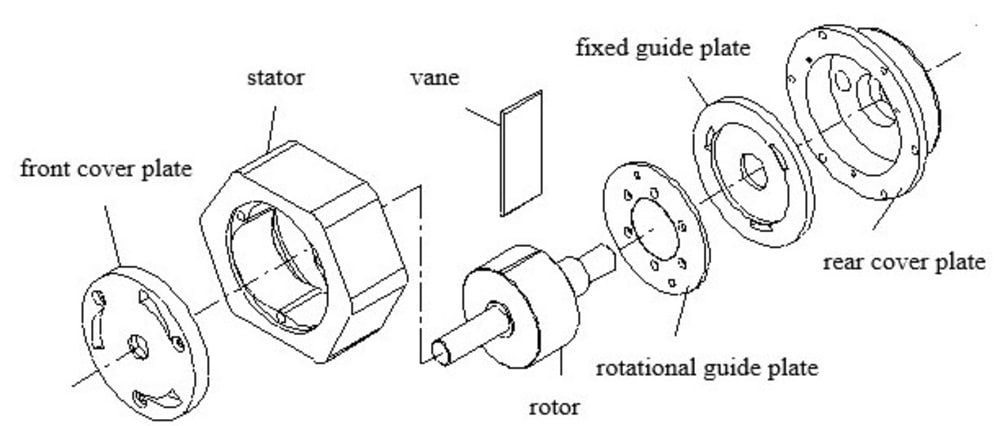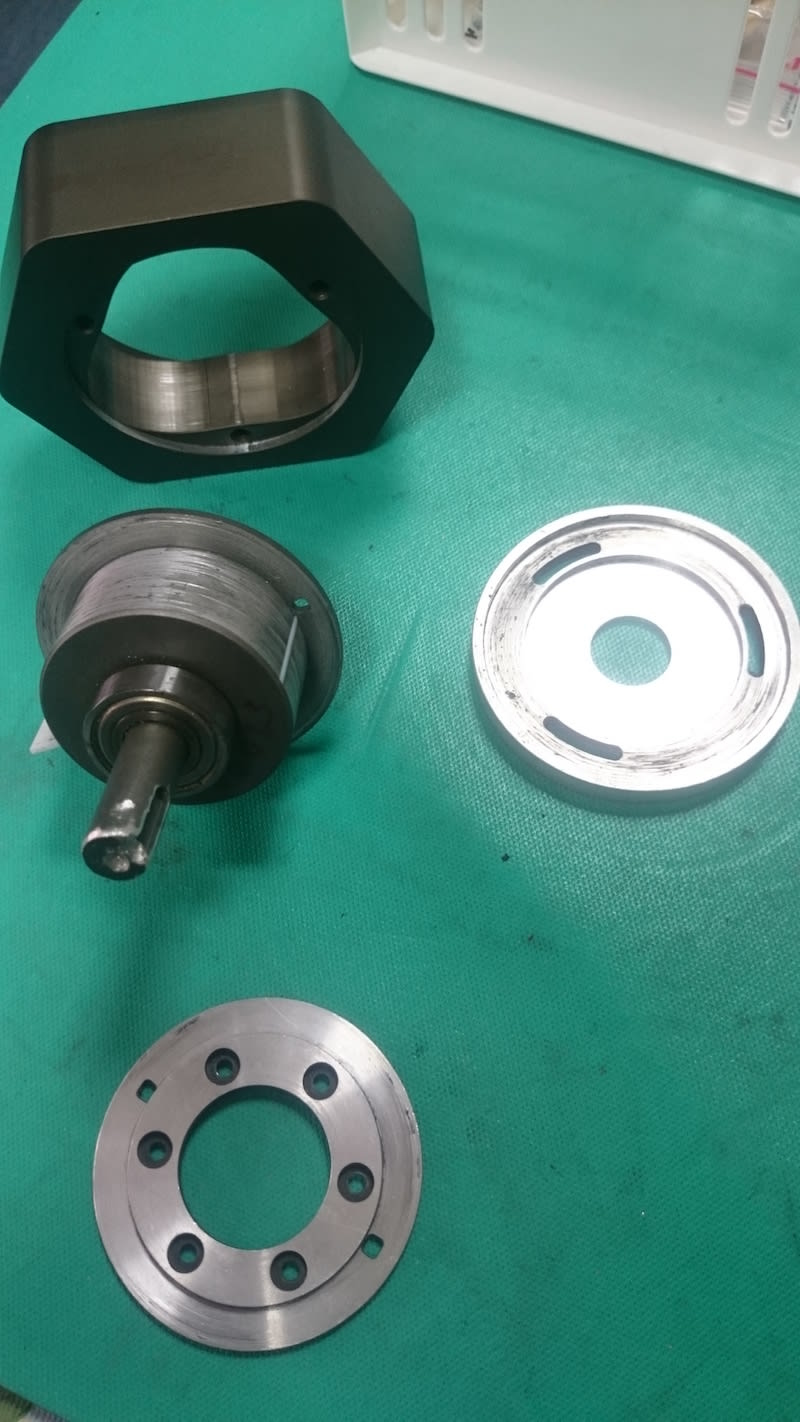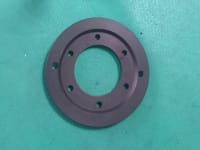This innovative compressor is a hybrid design based on rotary vane compressors and compressors of other conventional types. It consists of an inlet guide plate, a stator, a rotor, an outlet plate and a vane. The design of the stator with the three-lobe inner contour was based on the envelope theorem. Only the rotor and the vane are the moving parts to reduce the potential failure of the compressor.
The three-lobe inner contour of the stator creates three compression chambers that are formed by the inlet plate, outlet plate, stator, rotor and vane. No valve is required to prevent the backflow of the compressed air. There are six compression cycles per revolution of the rotor. Vanes are forced to contact the inner wall of the stator by the centrifugal force in most conventional sliding-vane rotary compressors. Noise that is generated in sliding vane rotary compressors may be due to the collision between vanes and inner wall of the stator because of the centrifugal force of vanes. Both sides of the single vane of this innovative compressor touch the inner wall of the stator at any time without using the centrifugal force during rotation of the rotor. Therefore, noise can be reduced in this compressor, and it can produce compressed air at any rotational speed. Not only the size, weight and maintenance cost of the compressor is reduced because of the less components need to be replaced, but also the life of the compressor is increased.
Air compressors have been used for many applications. The compressed air can be used as a medium to transmit power for small devices and clean usages. Especially, this compressor with the light weight has potential to be developed for portable or cordless devices such as blower, dust cleaner, and sprayer, etc.
Like this entry?
-
About the Entrant
- Name:Yuan Mao Huang
- Type of entry:teamTeam members:Gordon skylar Huang, Mindy Yelena, Tsung Han Tsai, Ting-Yu Lin
- Software used for this entry:SolidWORKs
- Patent status:pending








